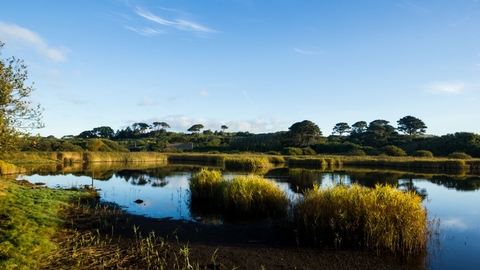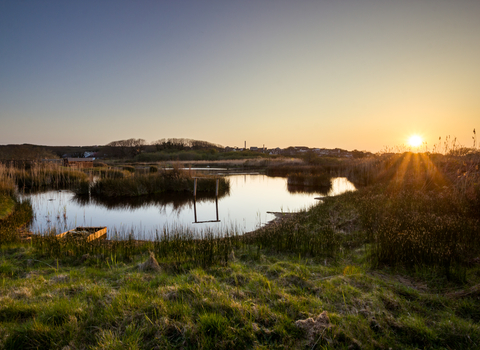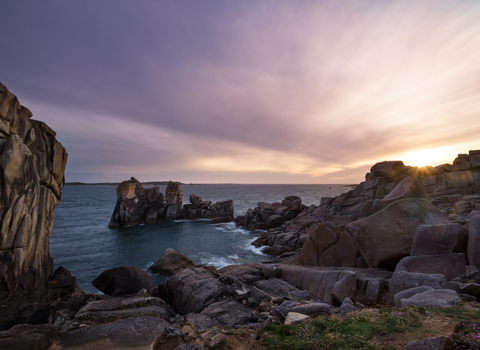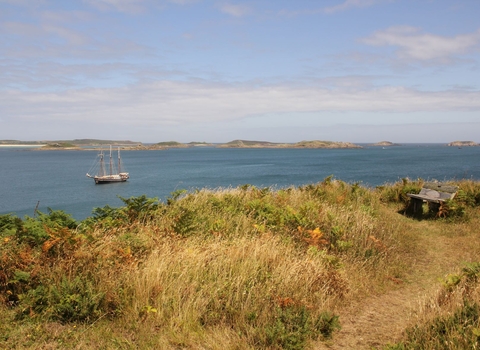
Porth Hellick (c) Ed Marshall
Higher Moors & Porth Hellick Pool
Know before you go
Dogs
When to visit
Opening times
Open year roundBest time to visit
Spring & AutumnAbout the reserve
Higher Moors is a beautiful wetland on St Mary's, made up of wetlands including Porth Hellick Pool and one of the only streams on the island, an area of wet woodland, scrub and adjoining farmland and the Porth Hellick Bank, with shingle and beach to explore. A recycled plastic boardwalk winds through the wetland from the main road to the beach, including a trail that loops through the wet woodland, and a striking shingle bank and secluded beach. The wetland is bordered on either side by rolling downs and heathland, including Porth Hellick Down to the north-west and Salakee Down to the south-west.
The site is popular with birdwatchers, and two hides overlook the main pool. Porth Hellick Pool is the largest freshwater body on St Mary’s and is fringed by common reed, which makes good breeding habitat for species such as gadwall, coot, water rail and sedge warbler and is nationally famous for its rare vagrant birds. In the spring, this is one of the best places to experience Scilly's dawn chorus, including warbler species, crests, tits, finches and thrushes. You might see sparrowhawks whipping through the area sending a variety of ducks scurrying into the reeds, or peregrine falcons patrolling overhead. Rare species spotted from the bird hides include a belted kingfisher from America in 2018, and vagrant species like red-rumped swallows are not uncommon during migration.
The beach is one of the places where ringed plover like to breed, although disturbance has affected their success rate over the years. Greenshanks are regularly spotted on the tideline in the spring, autumn and winter, and further offshore you might see kittiwakes and diving gannets. The scrub around the beach is a great spot for migratory birds in the spring and autumn, like spotted and pied flycatchers. Seals come inshore to rest on the beach and the adjoining headlands are perfect for watching dolphins and whales.
The pool is influenced by the tide and this is reflected in the small population of salt-tolerant species such as sea club-rush, saltmarsh rush and brackish water-crowfoot. The water-logged soils hold a wide variety of wetland species including gypsywort, water mint, hemlock water-dropwort, ragged robin and royal fern. Greater tussock sedge and slender-stalked sedge are scattered throughout the site, along with small stands of yellow iris and soft rush.
The shingle sandbar holds small populations of sea kale and sea sandwort, whilst the small strip of maritime grassland between the beach and the pool holds abundant red fescue, sea thrift and sea campion, which merges with the wildflowers.
We have reinstated rotational reed cutting on the site to benefit breeding birds, as well as opening up the ground to encourage native plants to flower. Likewise, the selective removal of grey willow during the winter helps to reduce water loss during the summer months. Our Ruby Red Devon cattle graze during the spring and late summer to help reduce nutrient levels through grazing.
Coppicing the willow carrs on site provides feeding and breeding grounds for a wider variety of invertebrates and birds. By opening up of the understorey, we have increased species such as royal fern and purple-loosestrife.



